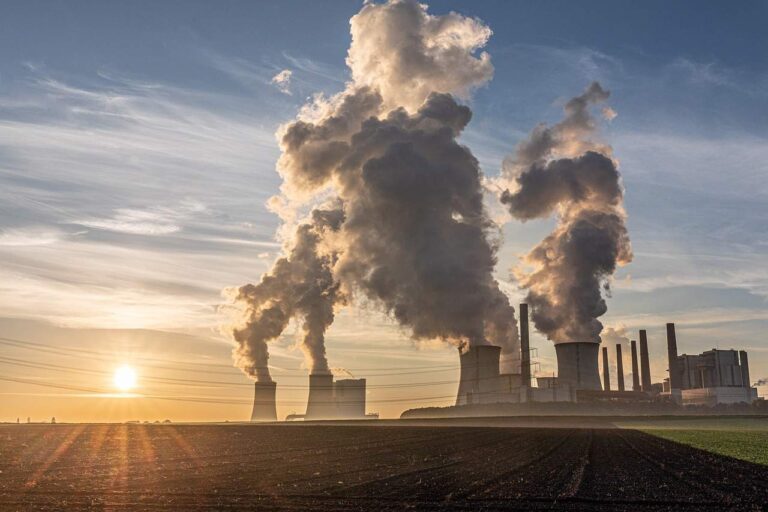Amid the escalating concerns surrounding climate change and its adverse implications, the imperative for efficacious strategies to alleviate greenhouse gas emissions has taken center stage. Among the promising avenues, carbon capture and storage (CCS) emerges as a notable contender. CCS effectively apprehends carbon dioxide (CO2) emissions from various sources. These sources include power plants and industrial facilities.
Carbon capture and storage signifies an innovative methodology. It aspires to avert the substantial release of CO2 into the atmosphere. Its accumulation fuels global warming. Instead, it intercepts CO2 emissions prior to their dispersal. It redirects them towards underground storage within geological formations or repurposes them for alternative applications.
This discourse dives into carbon capture and storage. It meticulously explores its mechanics, implementation modalities, advantages, obstacles, and prospects. By understanding the basics of carbon capture and storage, we can grasp its potential. It plays a crucial role in combating climate change.
Table of Contents
What is carbon capture and storage?
Carbon capture and storage (CCS) represents an innovative technology designed to tackle the issue of carbon dioxide (CO2) emissions. Its primary objective is to capture CO2 produced by power plants and industrial processes. It aims to store the captured CO2 underground instead of releasing it into the atmosphere. The process of CCS encompasses three fundamental stages: capture, transport, and storage:
- capture: The initial phase involves the separation of CO2 from other gases generated by industrial operations or power plants. Numerous techniques are employed for CO2 capture, including pre-combustion capture, post-combustion capture, and oxyfuel combustion;
- transport: Once CO2 is successfully captured, it necessitates transportation to an appropriate storage site. Typically, this is accomplished through the utilization of pipelines or ships;
- storage: The ultimate step in the CCS process entails storing the captured CO2 underground in geological formations. These formations can comprise depleted oil and gas reservoirs, saline aquifers, or unmineable coal seams. By storing CO2 in these formations, its sequestration becomes permanent. This prevents its release into the atmosphere and avoids contributing to climate change.
While CCS holds immense potential in significantly curbing greenhouse gas emissions, there exist challenges associated with its implementation. These include high costs, regulatory obstacles, and public acceptance. Nonetheless, CCS persists as a promising strategy in combatting climate change and facilitating the transition to a low-carbon economy.
Read also: From California a device to remove carbon dioxide from the ocean: what is the SeaChange project
How can CCS help prevent global warming
Carbon capture and storage (CCS) emerges as a pivotal technology with the potential to mitigate global warming by curbing greenhouse gas emissions. The CCS process captures carbon dioxide (CO2) from industrial operations and power plants. The captured CO2 is then transported to underground storage sites within geological formations.
Through the capture and storage of CO2, CCS effectively prevents its release into the atmosphere, thereby mitigating its contribution to global warming. CO2, a prominent greenhouse gas, perpetuates the retention of heat in the atmosphere, exacerbating climate change. By curbing the volume of CO2 emissions, CCS assists in decelerating the pace of global warming.
CCS holds promise in reducing the carbon footprint of various industries. These industries include cement, steel, and fertilizer production, which significantly contribute to global greenhouse gas emissions. Through the capture and storage of CO2, these industries can effectively curtail their emissions and progress towards sustainability.
Nevertheless, it is crucial to acknowledge that CCS alone cannot serve as a comprehensive remedy for climate change. It represents one among numerous strategies necessary to mitigate greenhouse gas emissions and combat global warming. Additional measures encompass enhancing energy efficiency, transitioning to renewable energy sources, and adopting practices that curtail consumption and waste.
Why CCS is not a sustainable climate solution?
Carbon Capture and Storage (CCS) is emerging as a promising solution for reducing greenhouse gas emissions. These emissions primarily come from large-scale industrial establishments. Nevertheless, a meticulous evaluation of CCS’s constraints becomes imperative to gauge its feasibility as an all-encompassing climate mitigation strategy:
- The exorbitant expenses linked to CCS technology pose a formidable obstacle. Erecting and operating CCS infrastructure demands substantial investments, rendering it economically impractical for numerous industries and nations. Furthermore, the energy-intensive nature of CCS exacerbates its financial encumbrance and gives rise to apprehensions about the net emissions reduction achieved;
- CCS, albeit a temporary remedy, merely prolongs the unavoidable necessity of transitioning towards cleaner, renewable energy sources. The captured carbon dioxide necessitates indefinite storage, mandating secure and stable geological repositories. However, the specter of leakage risks and lingering uncertainties surrounding the long-term viability of storage jeopardize the efficacy of CCS as a sustainable climate solution;
- CCS does not address the root causes of climate change. By focusing on capturing and storing emissions, CCS fails to tackle the fundamental issue of reducing reliance on fossil fuels and transitioning to sustainable energy systems;
- It diverts attention away from investing in renewable energy, energy efficiency, and other sustainable practices. It diverts resources away from investing in renewable energy, energy efficiency, and other sustainable practices. These practices can offer more permanent and holistic solutions to the climate crisis.
Considering these limitations, it is clear that CCS alone cannot serve as a viable climate solution. It may have some limited applications in specific sectors. A comprehensive approach is essential for effective and long-lasting climate action. It prioritizes renewable energy, conservation, and sustainable practices.
Read also: Modifying the weather: what is cloud seeding and what are its effects












